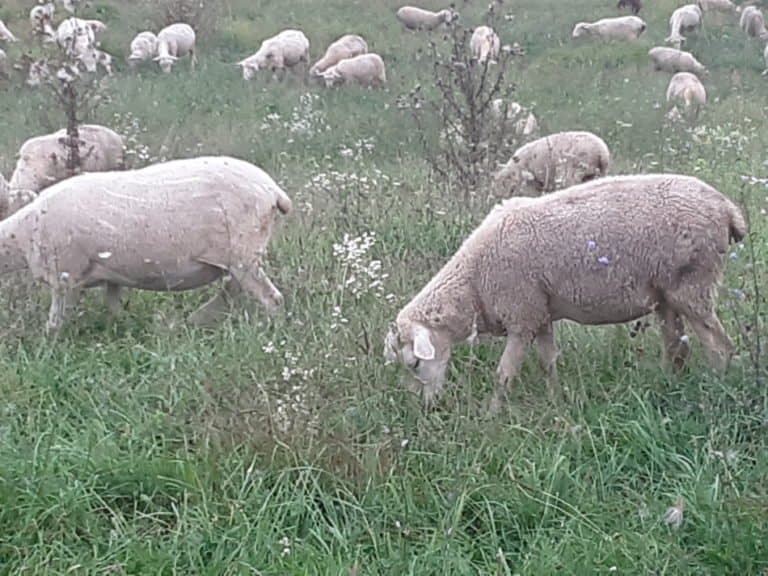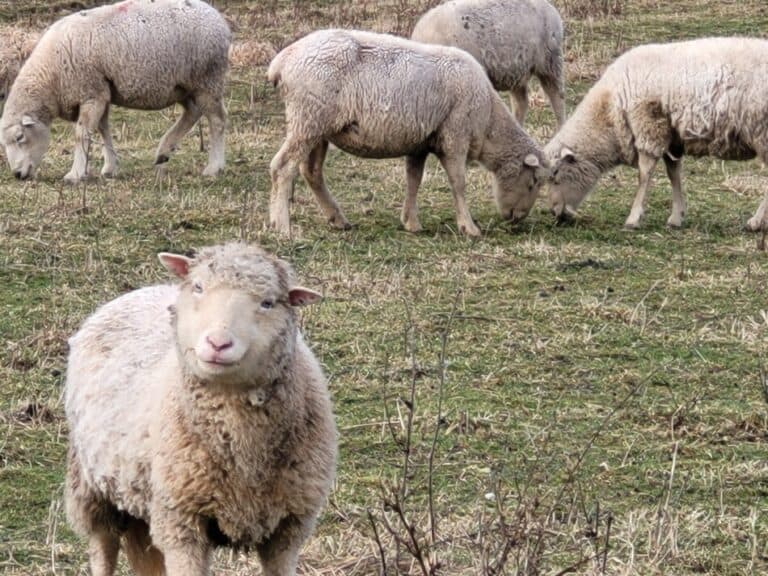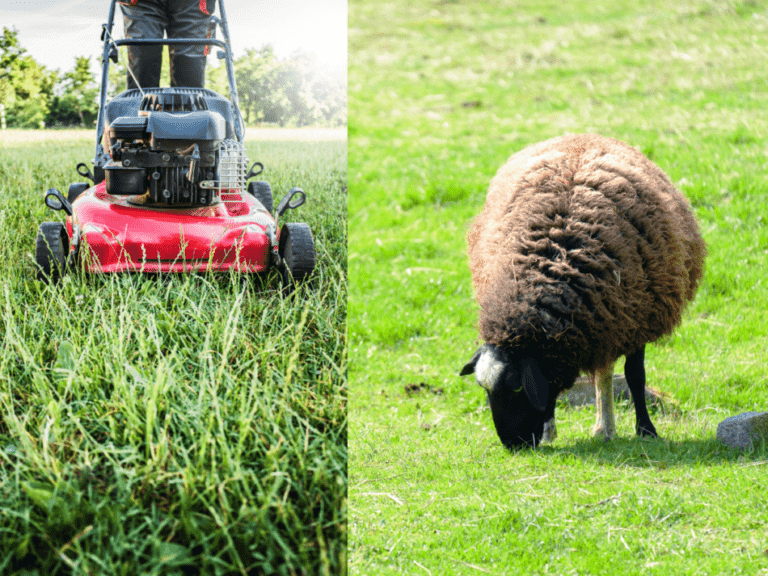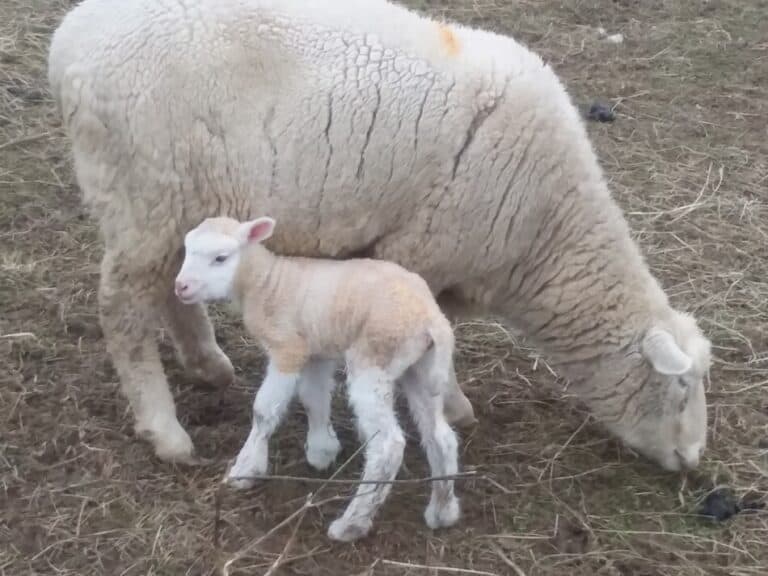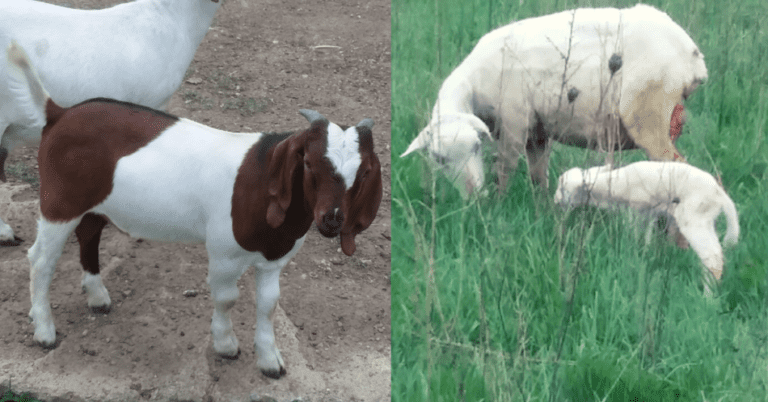7 Things Merino Sheep Are Known For
Merino sheep are one of the most well established sheep breeds in the world. They are now, as they have been in the past, a major influence in the sheep industry.
With all of the other sheep breeds available, what is so special about this breed that sheep farmers and ranchers continue to choose Merinos?

| Ram weight | 175-235 pounds |
| Ewe weight | 125-180 pounds |
| Fleece details | used for next to the skin soft garments, multiple grades from 22-14.5 microns |
| Best known for | fine wool, hardiness, mothering ability, longevity |
| Disadvantages | lacking carcass traits |
Merino sheep are known for their wool
The first thing that merino sheep are known for is their wool, it is wonderfully soft and versatile.
Merino is a favorite of folks who spin yarn as well as hand knitters or crocheters. It is soft enough to be used for next to the skin garments, including folks that have sensitive skin, both adults and babies.
Merino also can be used for most any woolcrafting that the wool enthusiast would be interested in making, yarn, rugs, hand knitted or crocheted items, and household items.
There has also been a resurgence in the popularity of felting and Merino is tops for felt. It felts together quickly and tightly and since it takes dye well, you get tons of great color selections for your creations.
Merino fleeces are consistent, meaning the quality of the fiber remains similar throughout the fleece. Merino fleeces also have a higher grease content, meaning they need washing and carding before use.
The fineness of wool varies by type of Merino
The Merino breeds have a variety of wool fineness, from superfine all the way to strong, with most falling more in between. Superfine is 14 microns and strong is more in the 22 microns range.
The Medium Wool Merino is the more common Merino of Australia with a wool that is from 20-22 microns that is used for textiles.
In the world of wool, anything under 22 microns is considered fine and anything under 30 is considered fine enough to wear next to the skin for most folks, with more sensitive folks preferring around 26 or so.
For anyone keeping track of the numbers, this means that Merino, when compared to other sheep, will all make the fine category of wool, even if it is not overly fine for the Merino breeds.
I have recently begun experimenting with Merino wool in my spinning, I have some fine Merino and some naturally colored that I’m working with now.
It took me a while to work up to such a nice fiber but now that I am there Merino is wonderful to spin and keeps shape when knitted, which is a big deal if you are making something fitted like hats or mittens.
Best Breeds Of Sheep For Wool is my article giving you a look at sheep being raised with a focus on wool, including fine, medium and long wool breeds.
There are multiple Merino breeds
There certain characteristics within the Merino breeds that will be more important for you to have in your flock than others so there are different types of Merinos bred to thrive in specific circumstances.
Generally speaking, there are the more meaty types of Merinos that keep the hardiness and add a more meaty carcass and there are the more wool focused Merinos that breed for finer micron counts.
For instance, in your area you may need a hardy ewe that can lamb unassisted and will raise a more meaty lamb, which might point you in the direction of a Merino selected for carcass traits.
Maybe you want the finest wool you can produce and all other characteristics like carcass value are a distant second. This would be more along the lines of Saxon Merino to produce superfine wool.
The Merino breeds are:
- Boroola
- Delaine
- Fonthill
- German Mutton
- Medium Wool
- Merinolandschaf
- Poll
- South African
- South African Mutton
- Strong Wool
Depending upon where you live, the Merino types are described differently than what you see here.
Australians Merinos are listed as Peppin (the most popular), South Australian, Spanish and Saxon strains, while Americans have type A, B or C. Most of the Merinos in the U.S. are Delaine Merino, which is type C.
Here is a link to Oklahoma State University Breeds of Merino Sheep page, which will give you the specifics on each of the separate Merino sheep breeds.
The Australian Association of Stud Merino Breeders has an article on the Australian Merino and has a explanation of the Merino types, listing the four strains and where they are most commonly raised.
Merino has influenced many breeds of sheep
Merino sheep have been around for centuries and throughout those centuries have been used to influence many other breeds of sheep.
For example, the Rambouillet, which is also called the French Merino, is the most popular breed of range sheep in the U.S. and, as you may have guessed from the name, Rambouillets are a Merino derivative.
Other sheep breeds that have Merino influence are:
- Columbia*
- Cormo
- Corriedale
- Debouillet
- Panama*
- Polypay*
- Polwarth
- Rambouillet
- Targhee*
Many of these Merino derivative breeds are from crosses with Rambouillet, which was developed from Spanish Merino. Breeds marked with an asterisk (*) are from Merino through Rambouillet.

Merinos are long lived
Merinos are a long lived sheep, with ewes remaining productive for a decade.
The productive life of the Merino is much greater than any other breed. Breeders have choice ewes 10 to 12 years of age that are maintaining their high productiveness.
American and Delaine Merino Record Association
If you are unfamiliar with how long farmers and ranchers normally keep sheep, 10-12 years is quite a bit longer than the average of other breeds that generally need to be replaced every 5 or 6 years.
When Is A Ewe Too Old To Breed? is an article I wrote going over the things to check to determine if a ewe will be able to stay productive in the flock or have to be culled.
Merinos have a good flocking instinct
Merino sheep have a good flocking instinct. Range sheep, sheep that are kept in large flocks, need to flock up well to be moved to different grazing areas and brought in for care, like shearing.
If you are from a more populated area, flocking may not seem overly important. Where are the sheep going to go anyway? But, flocking helps sheep more than you may think.
Flocking up it is actually one of the things that sheep do to ward off predators. A swirling group of sheep is much more imposing and confusing target than a single sheep off somewhere by herself.
Granted, flocking does not stop a determined predator, but it does add complexity to their hunt, which may be just the thing needed to thwart an attempt to grab a lamb.
Merinos have good mothering ability
In addition to being the foundation of the fine wool world, Merino sheep are also known for being good moms.
For anyone who needs the sheep to do their job without a lot of hands on time, because of an off the farm job or just sheer numbers of sheep, especially during lambing, this is a biggie.
A ewe that can be counted on to handle most of the mothering herself requires less time and attention from the shepherd, so lambs that are born are more likely to be raised and sold.
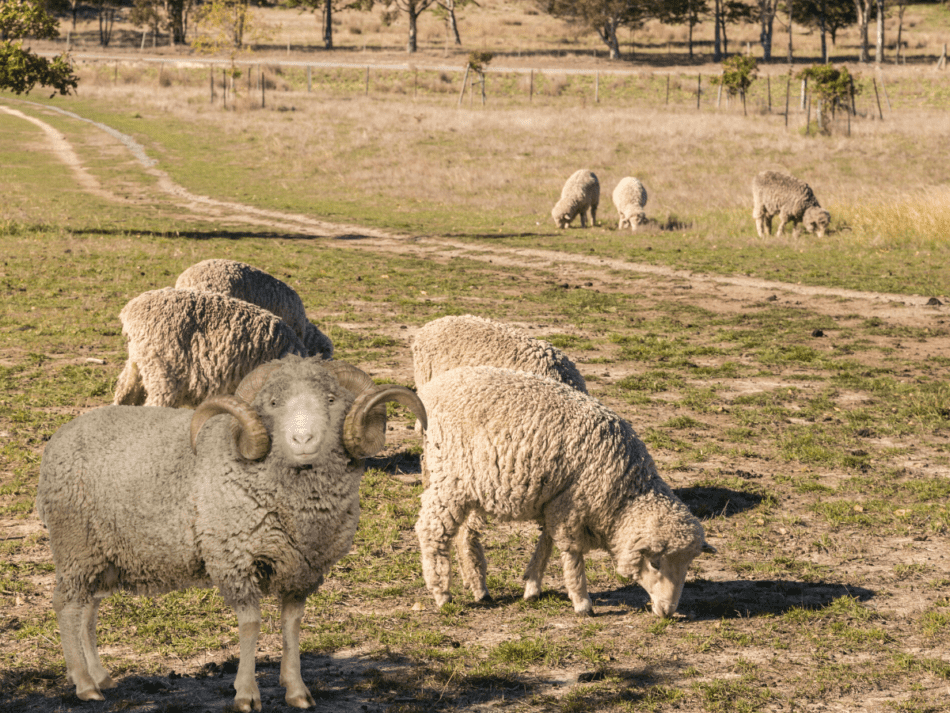
Merino sheep are hardy
You’ll notice when you look at the places that most Merino sheep are raised, it is normally a more challenging environment. This is where Merino sheep excel.
Merino sheep are known for their ability to handle arid environments that would be difficult for other sheep, especially sheep from milder parts of the world, to handle.
The main challenges in this situation are going to be water and heat, but it’s also forage quality.
Sheep breeds that grow like gangbusters also are heavy feeders, which is great when you have the environment to support that growth. (This is the case in my area, we generally have the forage and water.)
But what about the more sparsely vegetated grazing areas? Those are tougher environments that require sheep adapted to those conditions, like one of the Merino breeds.
Raising Merino sheep as a hobby
In my area, folks tend to raise Merino sheep for a hobby, mainly showing at local and state shows but sometimes national shows, as well.
In our area, showing sheep as breeding stock, not just market lambs, is a fairly popular hobby and Merino show stock is always on the list of classes.
Some folks with Merinos have them due to an interest in high quality, fine fleeces for spinning yarn. As far as fleeces go, it’s tough to beat a good Merino!
With the renewed interest in natural fibers, specialty wool is becoming more popular. Since Merino is famous for spinning as well as other wool based crafts, you’ll see it everywhere at wool festivals.
If you are interested in the spinning aspect of Merino wool, check out my other site WoolMaven.com, where I teach people how to get started spinning with wool!
Disadvantages of Merino sheep
The Merino is an amazing breed of sheep, but it does have a few disadvantages that you should know about before you decide to go with Merino as your breed of choice.
The main disadvantage I see with Merino sheep is that they produce a less desirable market lamb carcass, even the meatier Merinos will still be less meaty compared to other breeds available.
All sheep will eventually be meat sheep, even if you raise them as a fiber flock, and that selling price is based on meat.
The other catch with Merino is that the hallmark of the breed is the wonderful wool, and rightly so, but what about when there is little to no market for the wool?
In our area, this is a problem since the fine wool grown here is still not very low micron compared to the fine wool grown in drier parts of the country, the feed here is too good.
Plus, storage is a challenge due to humidity, so once the wool is shorn, it’s harder to keep it in good condition due to the moist air which can lead to mold.
Merinos in summary
To be upfront, if meat lambs is your main focus, you’ll probably be better off with a meatier breed if you live in an area with abundant forage and water, this is the case around here in most years.
For quite some time now all wool prices have been low, so sheep for wool production as your main money source does not make sense for most folks.
The Merino would have more valuable wool than most other sheep, but in the current market, wool sales do not make up for the difference in money to the producer compared to selling a meatier bodied breed.
However, if you are in the situation where you need the sheep to be mostly on their own for lambing or function well in a low water environment, one of the Merino breeds may be just the ticket.
